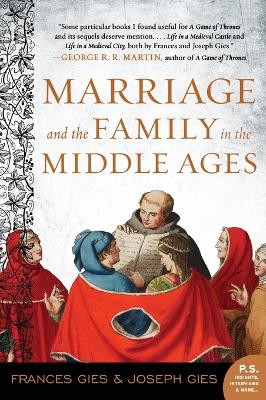Although I studied medieval literature in grad school, I always felt a bit shaky on some aspects of actual medieval history since I tended to gather that type of information less directly (i.e. reading articles about medieval literature that referenced historical matters rather than reading sources actually about history). Marriage and the Family Life is an engaging and approachable overview of life in the Middle Ages, covering the full time period and geographic areas in England and on the Continent, including France, Spain, Italy, etc. I wish I’d read this earlier to get a digestible sense of how customs and philosophies about marriage, inheritance, family living situations, children, and more were approached during these 1000 years.
I don’t think one actually has to have an academic interest in the Middle Ages to find this book interesting. The book jacket makes much use of the fact that George R. R. Martin has said he’s read the authors’ works to aid in his writing, and I do think the book is very readable and would make sense to anyone who would like to learn more about the topic.
The authors do open with a literature review of various other books/articles that had previously covered these topics, but one can safely skip that if they have no use for it and get on to actually reading about the marriage and the family. In the main body of the text, little stories and examples are scattered throughout to liven up the information.
The book goes in chronological order, and it gives a great sense of how things changed over time. (Interestingly, women had fewer rights in terms of divorce and inheritance in the Late Middle Ages than they did in the Early Middle Ages! So much for progress, I guess.) So readers can get a sense of things like how the Church or the Black Plague influenced marriage and the family, as well.
The one “failing” is that the book IS an overview, so often it would mention something I found interesting and wanted to know more about but move on without fully elaborating. Obviously, I can look up more on my own, of course.
If you’re interested in the Middle Ages, I would highly recommend this. I hope to check out the authors’ other books on life in the medieval village and life in the medieval city sometime for some more overviews.
